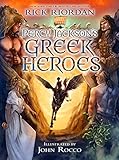Mexico's Dia De Los Muertos Honors The Dead
Language
Reading Level
Listen to Article
Alignment

The Day of the Dead, or Dia de los Muertos, is a vibrant and colorful celebration of life and death and an important part of Mexican culture. The annual holiday, held from November 1st to November 2nd, offers a unique opportunity to remember and honor loved ones who have passed away.
History and origin
The holiday's roots go back thousands of years to the indigenous peoples of Mesoamerica., including the Aztecs and the Maya. The area comprises modern-day countries of northern Costa Rica, Nicaragua, Honduras, El Salvador, Guatemala, Belize, and central to southern Mexico.
The ancient civilizations believed death was a natural part of the cycle of life. They celebrated the occasion for a month with elaborate burial ceremonies and shrines. When the Spanish conquered the regions in the 16th century, they introduced All Saints' Day and All Souls' Day to commemorate the dead. Over time, the two cultures blended, giving rise to the Day of the Dead as it is known today.
Altars

Families welcome their deceased loved ones with colorful altars, or ofrendas, decorated with various items. Each has a symbolic significance. Fragrant marigold flowers are used to guide the deceased's spirits to the altar. A sweet Mexican bread, known as Pan de muerto ("Bread of the Dead”), along with jugs of water, helps feed and quench the thirst of the returning souls. Candles and incense represent the element of fire, while colorful, pierced paper banners signify the wind.
Skeletons and skulls

The most familiar symbols of the holiday are the calacas and calaveras — skeletons and skulls. They appear on everything — from candied sweets to clothing, masks, and decorations. The brightly-colored smiling skulls serve as a reminder that the holiday is a celebration of the life of loved ones who are no longer with us. It is a festive, not a sad event.
Celebrations
The festivities begin at midnight on November 1st. It is believed that this is when the border between the living world and the spirit world dissolves. This allows deceased loved ones to cross over and join their families.

Families visit the graves of their ancestors, cleaning and decorating them with flowers and candles. They bring food and drink to share with the spirits. Many even spend the night in the cemetery. The celebrations also include parades, music, dancing, and feasting.
Resources:: History.com, thedayofthedead, holiday, thegracemuseum.org

Get the Workbook for this article!
Workbook contains: Article, Reading Comprehension, Critical Thinking Questions, Vocabulary in Context (+ answers), Multiple Choice Quiz (+ answers), Parts of Speech Quiz (+ answers), Vocabulary Game (+ answers)Cite Article
Learn Keywords in this Article
29 Comments
- potterheads777about 1 year“En el Día de los Muertos, honramos la vida y celebramos la muerte.” (On the Day of the Dead, we honor life and celebrate death.)
- book_addictabout 1 yearSounds so fun!
- tallink100about 1 yearIt sure does!
- gen2008about 1 yearI always found the concept of la Dia de los Muertos a fascinating and incredible subject. I like the fact that countries like Mexico have continued the tradition of respecting their ancestors and respecting their lives and traditions. I always found that admirable, and a fantastic way of keeping your ancestors' memory alive.
- tejasuhiheceabout 1 yearWow!
- milkfanforeverabout 1 yearWow




